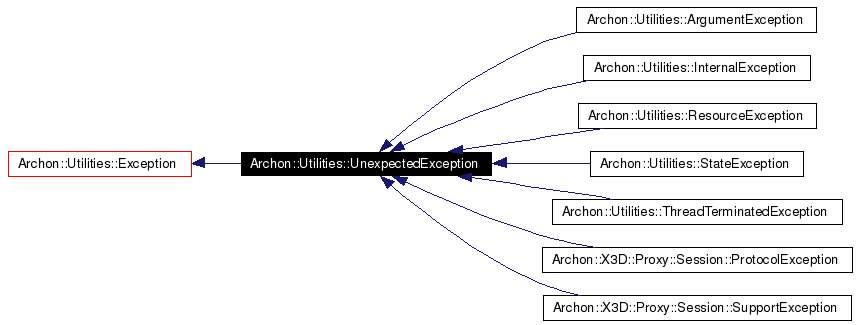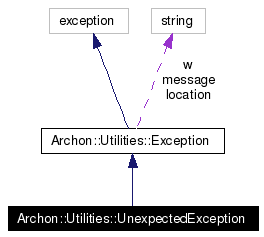
#include <archon/util/exception.H>
Inheritance diagram for Archon::Utilities::UnexpectedException:


Public Member Functions | |
| UnexpectedException (string location, string message) | |
Protected Member Functions | |
| UnexpectedException () | |
| UnexpectedException (string location) | |
The common trait for these conditions is that the caller cannot and will not handle them. There is generally only one way for these exceptions, and that is all the way back to main.
Two common subclasses are:
An example that does not comply with this class would be a "netword resource unavalable exception" thrown by a URI loader. For some applications of the loader this exception will be fatal, but other applications will have no problem in continuing without the resource. You could say that such an error is indeed expected.
There are a number of subclasses of unexpected exceptions. The purpose of these subclasses is to carry basic information about the type of exception. This should reduce the amount of information one needs to put into the message. The subclasses are not meant to be further derived, since there is not great need for a class hierarchy of exceptions that only rarely get cached.
Definition at line 340 of file exception.H.
 1.4.4
1.4.4